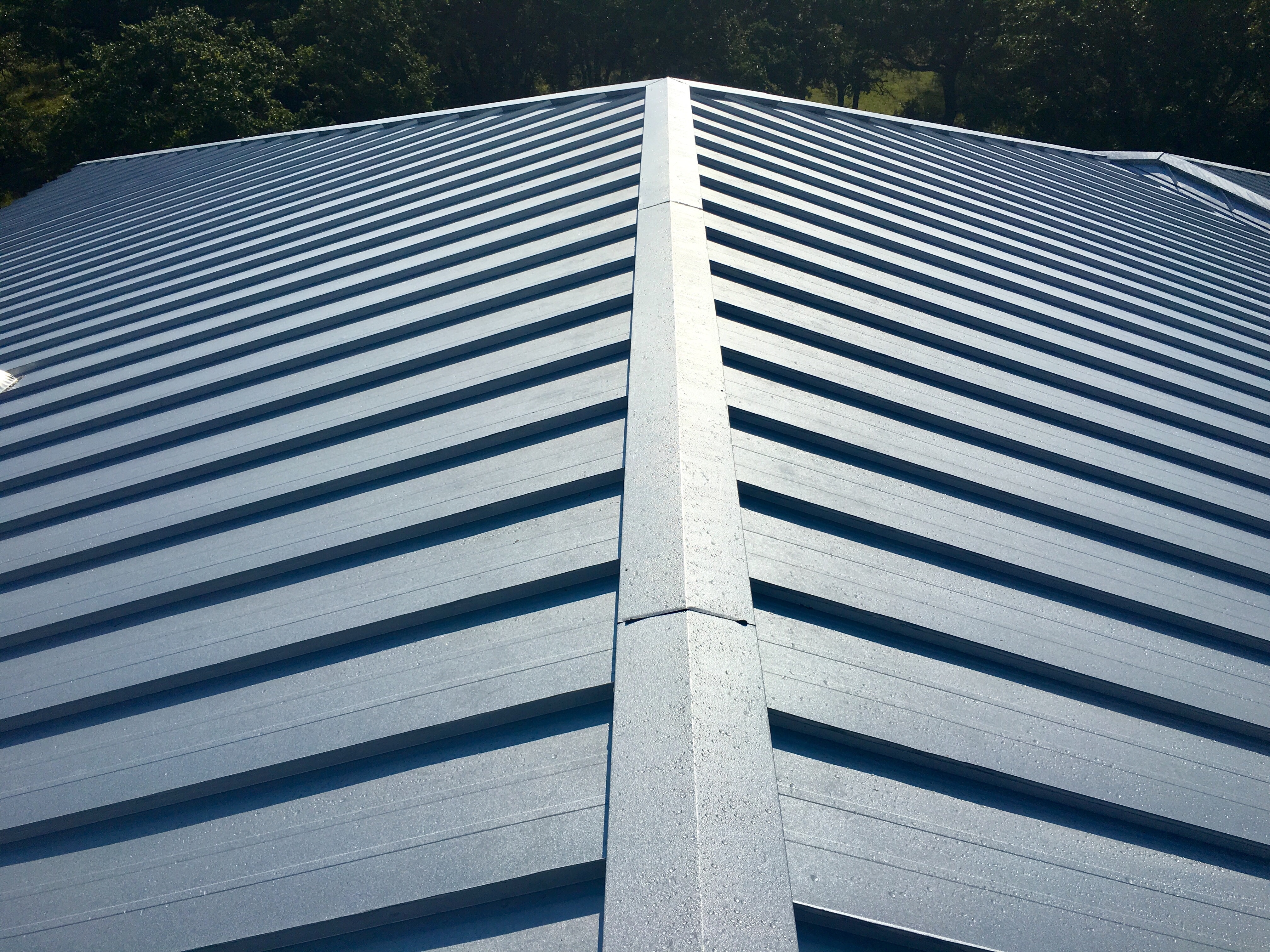You may wonder, will having a metal roof put your house at a greater risk for lightning strike? Lucky for you, it’s a common myth that metal objects attract lighting–they don’t! Metal conducts electricity if it is struck, but does not attract it. During a lighting storm, you are just as safe in a metal building or a metal-roofed building as you are driving along the road in a car. The key to safety is grounding the metal.
strike? Lucky for you, it’s a common myth that metal objects attract lighting–they don’t! Metal conducts electricity if it is struck, but does not attract it. During a lighting storm, you are just as safe in a metal building or a metal-roofed building as you are driving along the road in a car. The key to safety is grounding the metal.
A metal roof won’t make a building any more likely to be struck, in fact, a metal roof will help to dissipate the charge. Also, because metal is a non-combustible material, a metal roof will not catch fire. As with any structure, lightning will typically target the highest point in the given area. If a building does happen to be struck, there is a danger to those inside who are in contact with plumbing or anything plugged into electricity.
In order to protect your home, whether it be metal, shingles, wood-shakes, etc., your house must be grounded. Houses are grounded from the standpoint that they have an electrical system ground, communication system ground, data system ground, or metallic piping systems that enter the ground. Lightning wants to get to the ground by the easiest method it can find. If allowed to advance with no control mechanism through a structure, it may jump from between grounded systems or through the side-flashing of the house. When grounded systems are unintentionally interconnected, jumping might occur from a less suitable ground path (poorly grounded water line) to a better path (the electric service ground). Lightning jumping through free air can produce a dazzling “ball” of light. If it jumps through building materials, one consequence can even be a fire or explosion from super-heating. Plastic piping is not a conductor, but a system with partially plastic and metallic sections can lead to this side-flashing phenomena.
The most common form of grounding can be accomplished by a weather vane. It should be tall, metallic, and pointed, and it must have a path to the ground to dissipate the electric charge. A weather vane does not guarantee protection for your house or building, but it does try. The only way to ensure complete protection is by installing a thorough lighting protection system, usually done by a professional installer. A lighting protection system will ground an attracted charge passively. You can’t flip a switch to see if it’s working though, so it’s in your best interest to have the system reviewed about every 5 years. It would be a waste to have a protection system, just have it not work when the lightning strikes!
Citation:
Jensenius, John. “Chat Transcript.” USAToday.com. USA Today, 1 Nov. 2011. Web. 01 Nov. 2011. http://transcripts.usatoday.com/Chats/transcript.aspx?c=154.
Contact Lone-Star Roof Systems or visit our office today!
lonestarroofsystems.com
1-800-317-1939
Mailing Address
1511 South Texas Avenue, #172
College Station, TX 77840
College Station Office
18476 State Highway 6 S.
College Station, TX 77845
